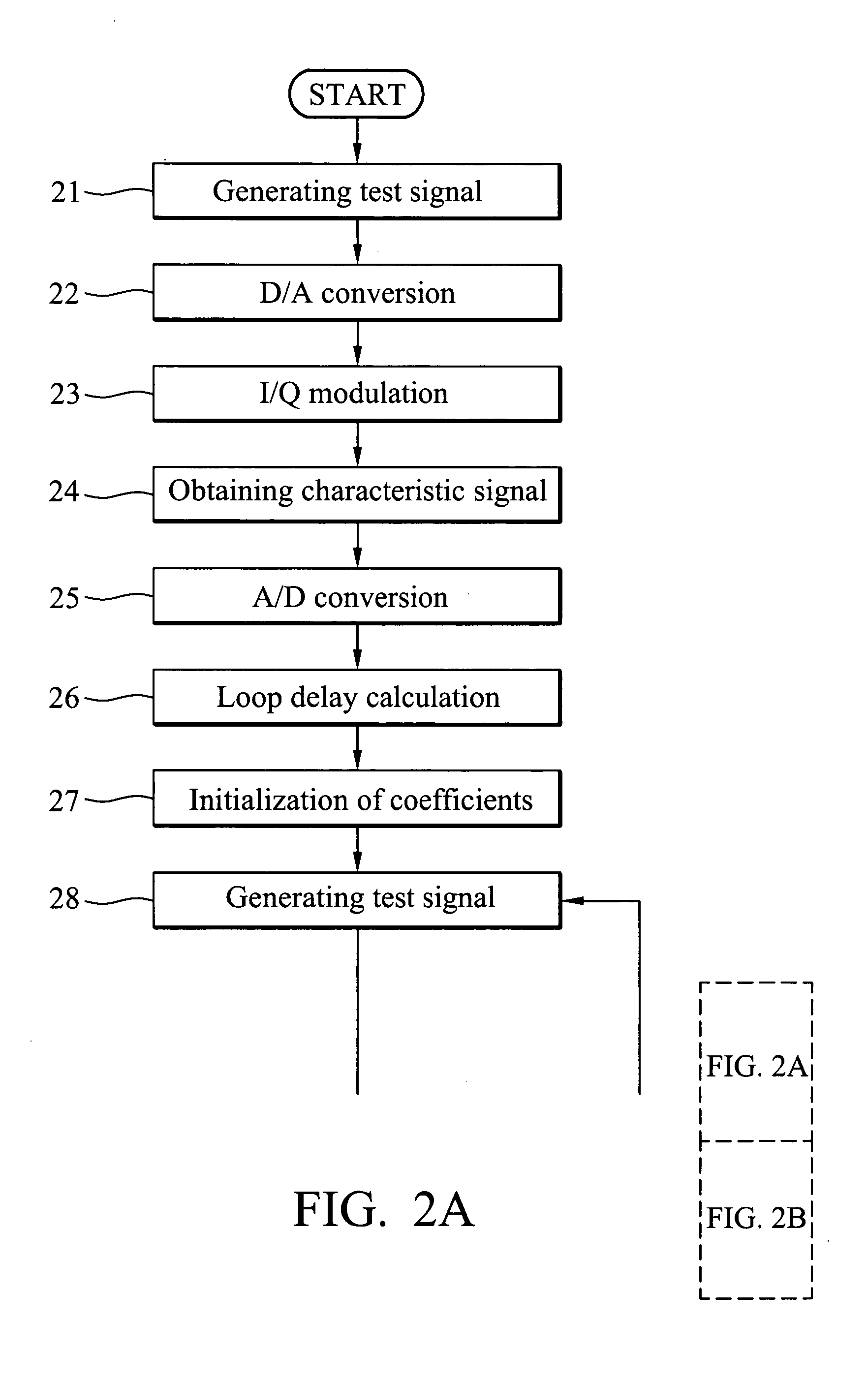Method and apparatus for I/Q imbalance calibration of a transmitter system
- Summary
- Abstract
- Description
- Claims
- Application Information
AI Technical Summary
Problems solved by technology
Method used
Image
Examples
Embodiment Construction
[0060] In the I / Q channel transmission architecture, there are two major sources of I / Q imbalance. One is the I / Q modulation and the other is the I / Q transmission band filtering. The mismatch resulting from the I / Q modulation is modeled as a constant over the useful signal bandwidth, which is called systematic I / Q imbalance while the I / Q transmission band filtering causes frequency-dependent I / Q imbalance. The present invention concentrates on the systematic I / Q imbalance. The mathematical theories of the invention will be described in the following.
[0061] The baseband signals for the I and Q channels before the I / Q modulation are represented as xI(t) and xQ(t) respectively. Assuming that an amplitude mismatch α, a phase mismatch θ, and zero local leakage results from the I / Q modulation, the equivalent baseband signals yI(t) and yQ(t) for the I and Q channels after the I / Q modulation are, without loss of generality, given by the equations:
yI(t)=xI(t)·(1+α)·cos(θ / 2)+xQ(t)·(1−α)·sin...
PUM
 Login to View More
Login to View More Abstract
Description
Claims
Application Information
 Login to View More
Login to View More - R&D
- Intellectual Property
- Life Sciences
- Materials
- Tech Scout
- Unparalleled Data Quality
- Higher Quality Content
- 60% Fewer Hallucinations
Browse by: Latest US Patents, China's latest patents, Technical Efficacy Thesaurus, Application Domain, Technology Topic, Popular Technical Reports.
© 2025 PatSnap. All rights reserved.Legal|Privacy policy|Modern Slavery Act Transparency Statement|Sitemap|About US| Contact US: help@patsnap.com



